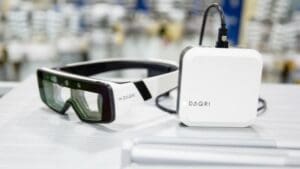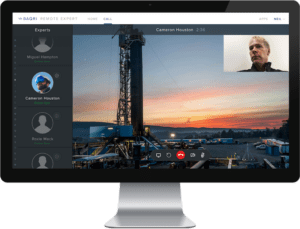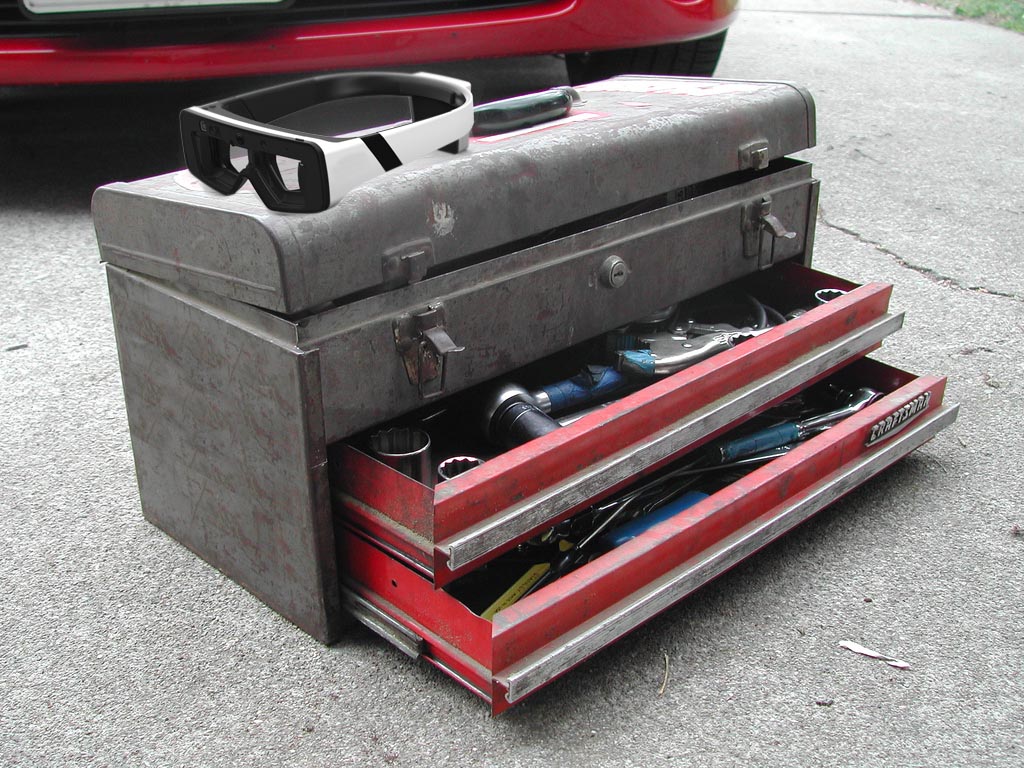Everyday, Augmented Reality (AR) is becoming less “science fiction” and more of an essential element for enterprise growth as industries discover its various practical uses in the field. While many companies have had this innovative technology on their radar for quite some time, others are just beginning to scratch the surface and understand how it can positively impact their organization as a whole.
On one end of the spectrum, mobile devices now equipped with the hardware to digest and enhance AR capabilities make it near inevitable that its popularity will rise. A simple glance at Apple’s App Store reveals a wide range of use cases, from entertainment to business-specific applications.
On the other end, the less widely adopted but often more impressive utilization of AR on the job can be found in the production of wearables. Professional-grade hardware, such as DAQRI Smart Glasses™, open up a realm of possibilities in field service, where the need to utilize both hands is practically a requirement for success. The days of flipping through a novel-sized service manual are drifting away and swiftly being replaced by AR, which overlays information and images onto the real world, providing technicians with all necessary information and instructions, in real-time.

No one questions that the fusion of technologies including IoT, Big Data, AR, VR, and enhanced field service management software play a pivotal role in shaping the industry. But how soon will AR become commonplace in a fairly transformative ecosystem such as field service? What does the future of field service look like?
The future is quickly becoming reality, as demonstrated in the following areas.
TRAINING
By offering numerous potential benefits and minimal risk, organizations are already finding success in utilizing AR as their preferred training method.
Since augmented reality is superimposed onto a real-life setting, the potential training possibilities are vast, from mechanics learning how to service cars to medical students properly implementing IVs. An infinite number of environments and scenarios can be replicated to cover a wide-ranging variety of training curriculum.
What’s more, AR can increase training safety by deterring potentially dangerous situations s associated with complicated heavy machinery operation. The ability to simulate a live environment can provide trainees with valuable experience rivaling that of real-life, hands on training experience – with one significant difference – mistakes won’t cost the company an exorbitant amount of money or needlessly endanger employees.
Additionally, training costs are significantly reduced. Once the foundation is in place, training can be easily replicated and deployed whenever or wherever necessary. Moreover, training can be delivered in just about any location – an instructor can provide instructions remotely, effectively eliminating the need for equipment to be shipped.
Training with live equipment is more expensive than in simulations. In fact, the U.S. Navy conducted a ‘cost avoidance’ study comparing an eight-hour training session on actual equipment against the same training using 3D Interactive Simulation. They concluded that their $1.28 million investment in PC-based interactive training saved them $4.24 million in avoided costs, with a final ROI of $2.96 Million – and that was on just one piece of equipment.

If you aren’t already convinced, take a look at the symbiotic relationship between AR and IoT. Such an integration can provide massive amounts of relevant data, such as equipment sensor readings that indicate what is and isn’t working, all while considering potential improvements or modifications that can be applied to the individual training modules.
REMOTE CAPABILITIES
Field service companies are eager for the ability to address issues remotely. Equipping expert technicians with AR to enable them to reach their customer base helps both parties immensely and equally. This type of service operation, recently coined as the “virtual technician”, eliminates the additional travel time, costs, and resources needed to send a technician to resolve an issue. The customer gets the immediacy of resolution without any repercussions, like waiting patiently in a six-hour service window, or worse, enduring the economic consequences of inoperative equipment.
Both sides win.

In the case of more complex dilemmas, sending a technician may be unavoidable. However, in these instances, technicians can use AR to review a repair procedure prior to their arrival, providing the technician with equipment sensor readings indicating the specific component in need of replacement. Essentially, he will have already “seen” and diagnosed the issue prior to his visit and can bring the appropriate tools and parts to deliver service.
To put this in perspective, the Aberdeen Group indicates that 33 percent of service work orders require a second trip. AR applications help eliminate the 37 percent of second trips required due to lack of experience or information and the 28 percent caused by incorrect diagnoses.
AR can radically change the dynamics of service interactions. Increasing first-time-fix opportunities and boosting customer satisfaction are just the beginning.
INEXPERIENCED WORKFORCE
In 2015, a study showed that a third of organizations are already feeling the negative effects of an aging workforce. Nearly 40% of employers are finding it difficult to fill open technician roles. There’s no influx of youthful workers eager to take the field service torch and expand upon the foundation of their predecessors.
Thankfully, AR should be able to bridge this problematic gap.
Seasoned technicians that might have previously been forced into retirement due to age-related or physical factors will see their careers extended with the ability to diagnose and solve issues from a remote location.
Integration of AR and the ability to communicate and deliver solutions in real-time allow the more experienced technician to be involved in the scenario. They can provide immediate guidance to the junior technicians in the field. This will allow the younger, less experienced service techs to utilize the telepresence of their more well-versed colleagues.
Imagine a technician being able to successfully resolve an issue despite it being the first time they’ve ever encountered it. It’ll lead to increased efficiency throughout the industry.
CONCLUSION
Consider this recent study completed at Iowa State University. Two groups of participants were asked to assemble a mock airplane wing. One group worked from instructions on a desktop computer, while the other worked from instructions on a mobile tablet converted to an overlay on the wing assembly.
The group using the AR instructions committed 90% fewer errors during the assembly and built their wing 35% faster than the other group.
The goal of every service business is to maximize efficiency, and most will agree that AR can improve two key performance metrics: first-time fix rates and average repair times.
The driving factor for the adoption of a modern function like AR will ultimately be decided by a simple question: will great opportunities be unlocked by businesses that deploy AR?
Every current indication points to a resounding “yes.”




